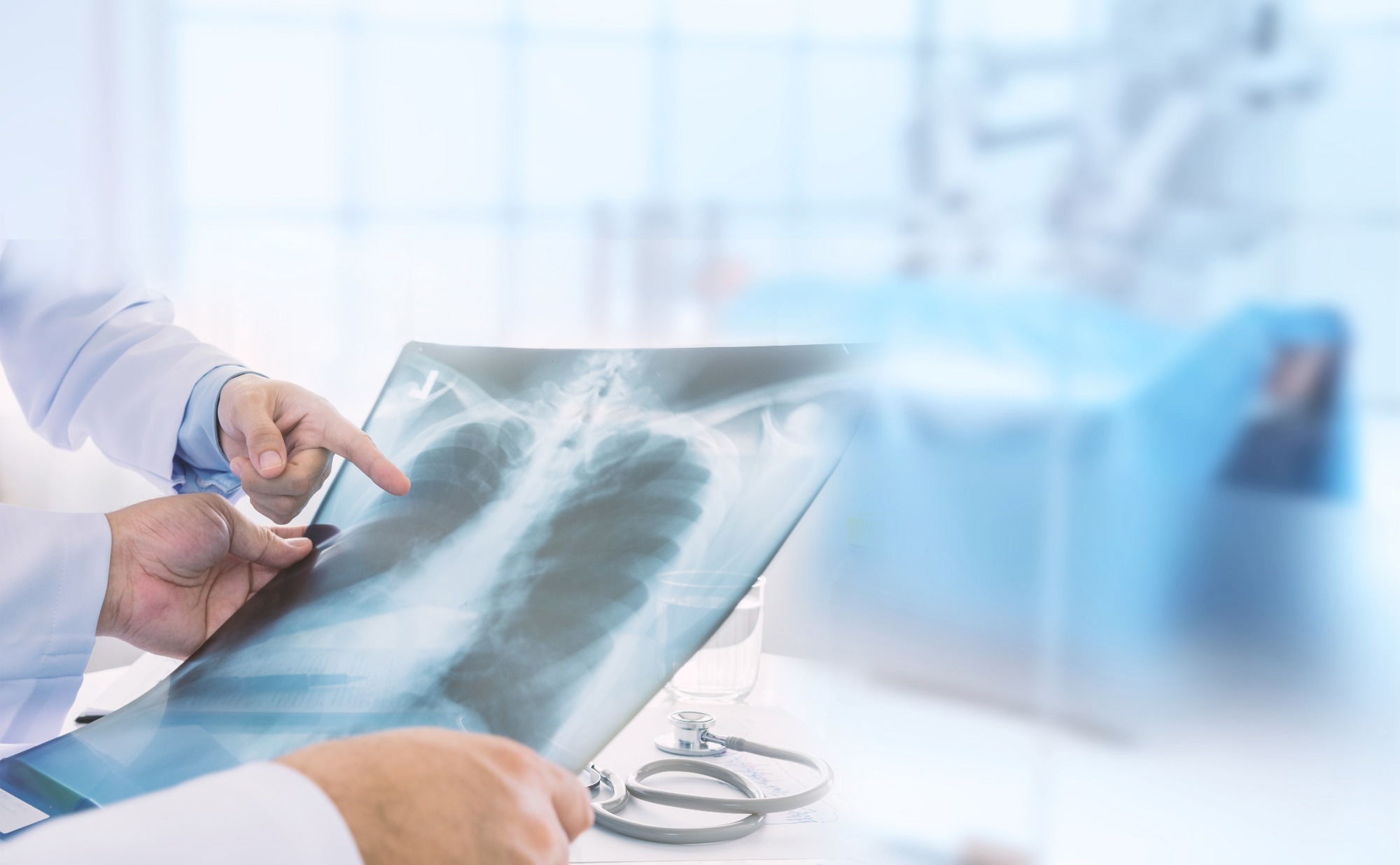A recent Lancet Healthy Longevity study developed an AI model, based on deep learning methods, to determine the age of individuals by analyzing their chest radiographs.
 Study: Chest radiography as a biomarker of ageing: artificial intelligence-based, multi-institutional model development and validation in Japan. Image Credit: create jobs 51/Shutterstock.com
Study: Chest radiography as a biomarker of ageing: artificial intelligence-based, multi-institutional model development and validation in Japan. Image Credit: create jobs 51/Shutterstock.com
Background
Aging is a complex change associated with the incidence of many diseases. In recent years, research on aging is gaining immense popularity because the number of people over the age of 60 years is growing at an increasing rate, globally.
It is important to better understand the biological aging process and determine the factors associated with healthy aging.
Various molecular and phenotypic biomarkers of aging have been identified. For instance, chest radiography has been proposed to be a phenotypic biomarker of aging which is associated with reproducible and minimally invasive methodology.
Complex aging-related changes can be determined by chest radiographs because they provide comprehensive details of the shape of features within the body including internal organs and bone characteristics. Therefore, the chest biomarker is considered a quantitative potential biomarker of aging, which can be exploited to improve the relationship between aging and the incidence of various diseases.
Deep learning (DL) is a part of artificial intelligence (AI) which has significantly improved the field of medical imaging. DL is capable of solving complex and new tasks because of its ability to automatically extract relevant characters from training data. To date, the association between aging and chest radiographs is not completely understood, and this relationship could be elucidated using DL methods.
About the study
This retrospective, multi-institutional cohort study was divided into two phases. The first phase was associated with biomarker modeling, while the second phase concerned correlation investigation.
The biomarker modeling phase used chest radiographs, which were obtained from Japanese patients during their periodic health check-ups, to develop a biomarker of aging. During this phase, the AI model was trained, tuned, and tested for accurate estimation of chronological age using digital chest radiographs. This phase used a cohort of healthy participants from institutions A, B, and C.
In the second phase, the correlation between AI-estimated age and disease was evaluated. This phase used a cohort of patients with known diseases from institutions D and E.
Study findings
The biomarker modeling phase included a total of 67,099 radiographs from 36,051 healthy participants, whereas the correlation investigation phase included 34,197 radiographs from 34,197 participants.
Based on the findings of the AI model developed in this study, chest radiographs could be used as a biomarker of aging. Using the healthy cohort, the AI model’s estimation of root mean square error (RMSE), mean square error (MSE), mean absolute error (MAE), and the correlation coefficient indicated that the AI-estimated age has a strong correlation with chronological age.
Although signs of aging in chest radiographs were associated with several chronic diseases, they could not be linked with acute diseases. This implies that AI captures chronic changes instead of acute changes in chest radiography. This could be because aging results from chronic changes that accumulate over time.
Consistent with previous models, the current biomarker modeling phase generated saliency maps that revealed an elevated accumulation of hot regions in the superior mediastinum with aging. It was observed that lung fields, particularly the lower lung fields, had a significant effect on the accurate estimation of aging through saliency maps.
Despite differences in methods and cohort used, the consistencies in findings indicate the reliability of the saliency maps developed by the new regression model. The saliency maps also revealed an increasing coldness of the bilateral lower lung fields for younger ages.
The correlation investigation phase indicated an association between the AI-determined model estimated age and a variety of chronic diseases.
In this phase, the odd ratios (OR) in the cohort of patients with a known disease exhibited a relationship with hyperuricemia, chronic obstructive pulmonary disease, hypertension, lung disease, chronic renal failure, interstitial liver cirrhosis, osteoporosis, and atrial fibrillation.
Conclusions
The authors claim this study to be the first to create and validate a DL-based regression model for aging using chest radiographs. This model has overcome the shortcomings of the existing models regarding generalizability and overfitting. This was achieved by testing the new model with data from several different facilities.
The newly developed model requires further validation using a prospective dataset to confirm causality in addition to correlation. In addition, this model was not tested with established biological age markers, such as epigenetic clock and frailty index.
Furthermore, saliency maps were developed based on down-sampled images. Since the newly developed AI model was validated with chest radiographs from the Japanese cohort, its applicability to different ethnic and racial populations must be determined.
Despite the limitations, the newly developed AI model indicated that the chest radiograph is a biomarker for aging. The AI-estimated age of patients with a known disease was found to be higher than their chronological age.